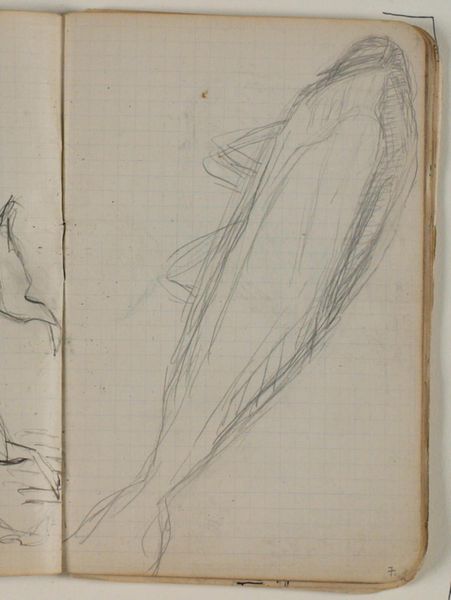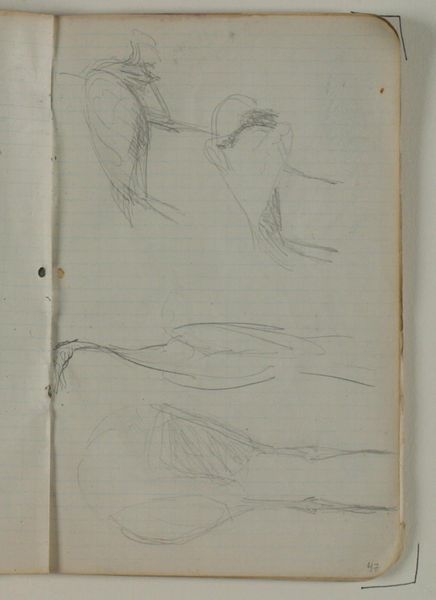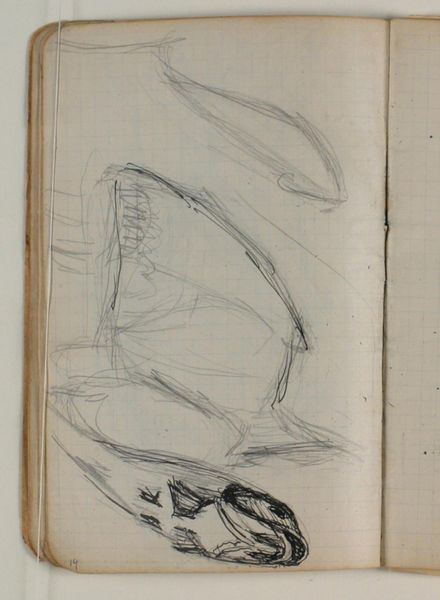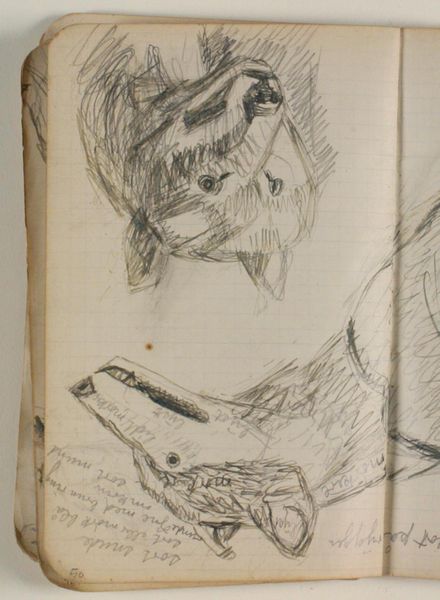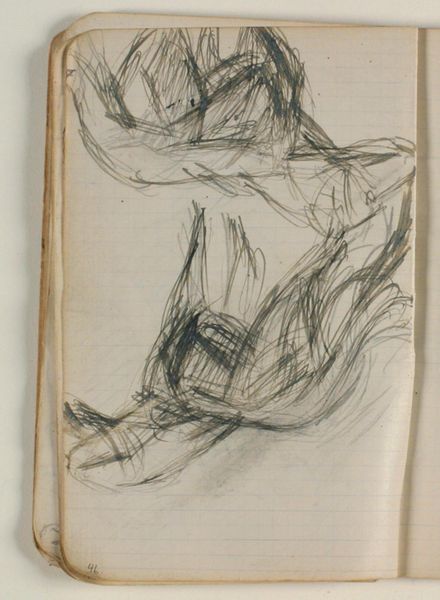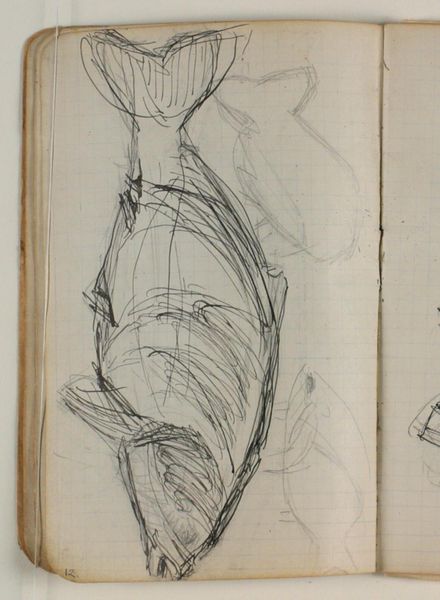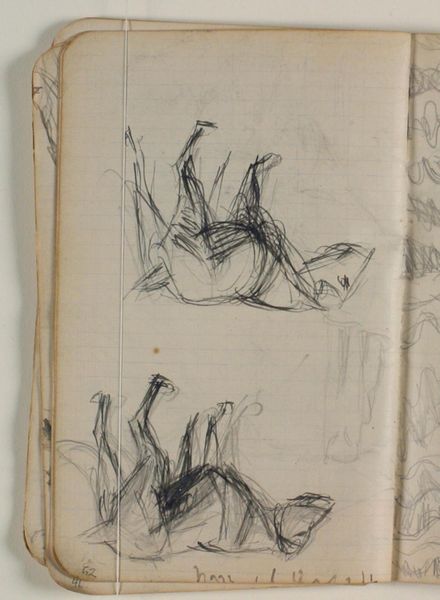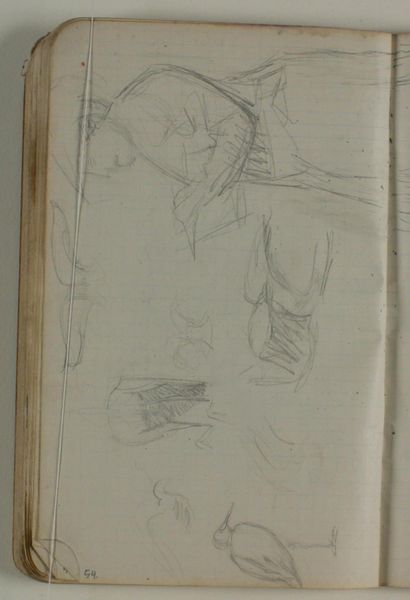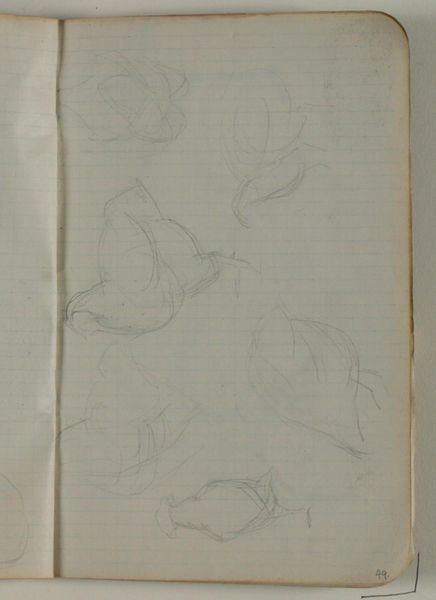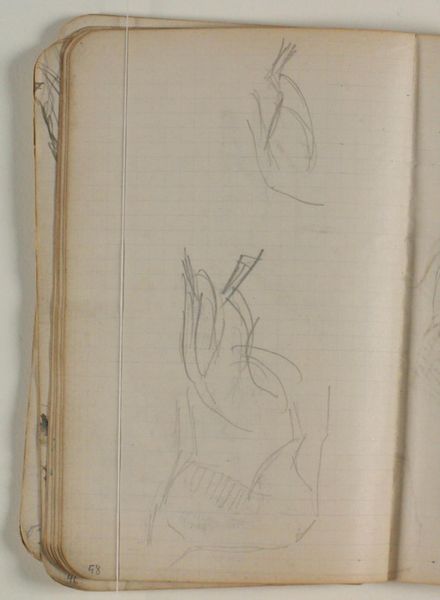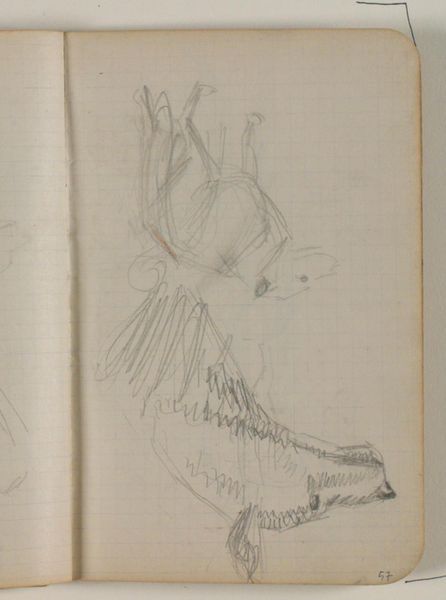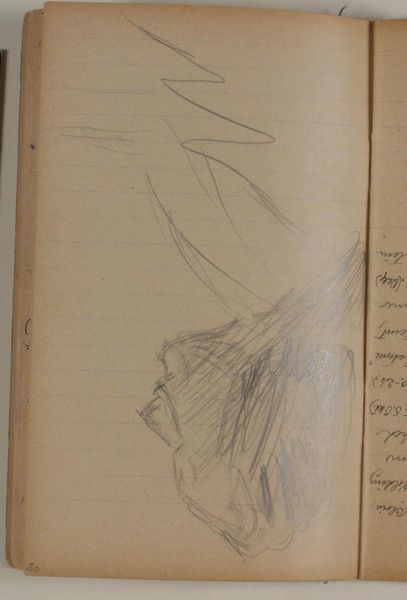
Studier af andefugl samt identificerede rids 1905 - 1907
0:00
0:00
drawing, paper, pencil, graphite
#
drawing
#
pencil sketch
#
figuration
#
paper
#
form
#
pencil
#
line
#
graphite
Dimensions: 169 mm (height) x 109 mm (width) x 5 mm (depth) (monteringsmaal), 169 mm (height) x 109 mm (width) (bladmaal)
Curator: Niels Larsen Stevns' “Studier af andefugl samt identificerede rids”, or “Studies of Waterfowl and Identified Sketches,” completed between 1905 and 1907. It’s rendered in pencil and graphite on paper, part of the collection at the Statens Museum for Kunst. Editor: It’s surprisingly gestural for sketches – very immediate and free. I like the layering; it suggests movement, or perhaps the artist circling his subject. It almost has an anxious quality. Curator: That urgency speaks to the role of sketching within academic artistic practice at the time. Think of the natural history illustrations so prevalent then; artists sought to understand their subjects intimately through observation and reproduction. It mirrors a wider societal obsession with cataloging the natural world. Editor: Yes, and the somewhat haphazard arrangement makes me think about the sketchbook as a space of freedom, experimentation, outside of more rigid structures, formal presentation... Almost a glimpse behind the scenes of artistic labor? Curator: Precisely. It shows us his process, the repetitions, the search for the right line to capture form and essence. Note how line defines form, almost exclusively; Larsen Stevns reduces the birds to the bare minimum needed to identify them. Editor: And to me, these aren’t just studies of birds, but studies of ways to see, to record. We’re invited to observe not just the subject, but the act of observation itself, which I find so critical when we think of representation. Curator: Right. In the sketches on display here we also glimpse an artistic exploration unfolding—an artist grappling with how to distill complex forms into simplified, evocative representations. Editor: And, as an aside, the sketchbook format is vital – the grid of the page peeks through, framing these seemingly fleeting images and forcing me to read it through the lenses of documentation, data, and control, of course. Curator: A lens that is always critical when analyzing a work such as this. The tension between the formal scientific impulse, and the free artistry found within such work opens some fascinating discussions. Editor: Agreed. This piece really underlines the importance of thinking about art as both a product of its time and a contribution to contemporary dialogues about perception and knowledge.
Comments
No comments
Be the first to comment and join the conversation on the ultimate creative platform.
